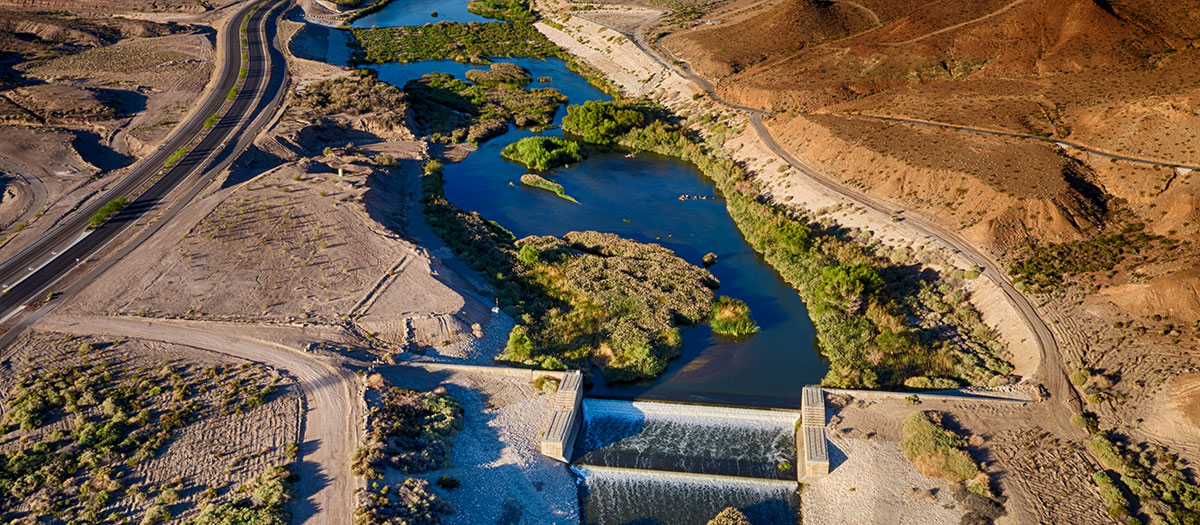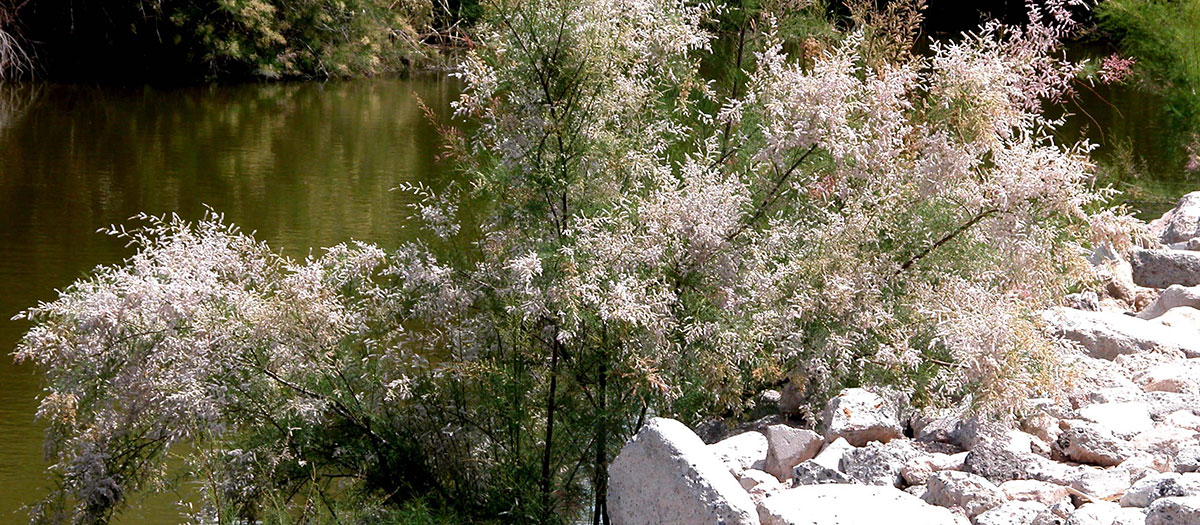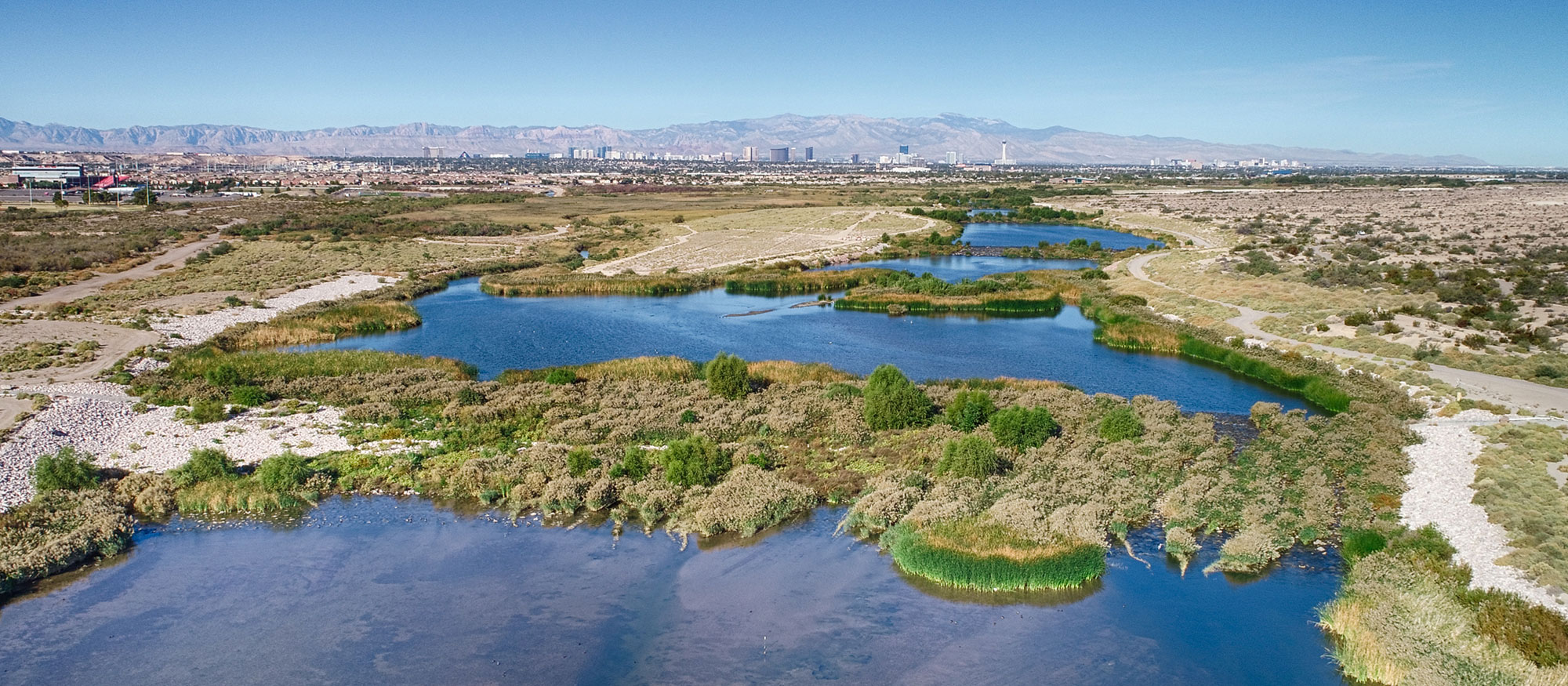The Las Vegas Wash plays an important role in our water quality, and it serves as a habitat for diverse plant and animal species. It is the primary channel through which the Las Vegas Valley's excess water returns to Lake Mead. Contributing approximately 2 percent of the water in Lake Mead, the water flowing through the Wash consists of urban runoff, shallow groundwater, storm water and releases from the valley's four water reclamation facilities.
Decades ago, the flows of the Wash created more than 2,000 acres of wetlands. By the 1990s, however, only about 200 acres of wetlands remained. The dramatic loss of vegetation reduced both the Wash's ability to support wildlife and serve as a natural water filter.
Today the Wash carries more than 200 million gallons of water a day to Lake Mead. The efforts to stabilize the Wash have resulted in a 60-percent reduction in the amount of total suspended solids (fine particles of sediment) in the water and the removal of the Las Vegas Wash from Nevada Division of Environmental Protection's list of impaired waters.
Protecting and enhancing the Wash and surrounding wetlands
In 1998 at the request of its citizens advisory committee, the Water Authority reached out to the community in an effort to develop solutions to the problems affecting the Wash.
This led to the formation of the Las Vegas Wash Coordination Committee, a panel representing more than two dozen local, state and federal agencies, environmental groups, the business community, the University of Nevada, Las Vegas and private citizens.
The committee developed a long-term management plan aimed at stabilizing the Wash and enhancing the surrounding vegetation to protect soils, improve water quality and increase aesthetics and wildlife habitat.
About the Las Vegas Wash
The Las Vegas Wash is the primary channel through which the valley's excess water returns to Lake Mead. Learn how these local wetlands help protect our water supply.

Wash weir construction
To address erosion at the Wash, a total of 21 weirs were planned and completed. The use of steel sheet pile, concrete and rock riprap reduces erosion and stabilizes the channel.
Concrete rubble from the imploded Stardust Casino, the El Rancho Casino, Desert Inn Hotel, MGM Hotel, Castaways and Westward Ho has been used in the stabilization effort.
As sections of the channel are stabilized, riparian and wetland habitats are established. The weirs help slow the water, creating a pond behind the structures in which wetland plants can flourish.

Saltcedar
Introduced in the United States in the late 1800s, a highly invasive, non-native tree named saltcedar (aka tamarisk; Tamarix ramosissima) was able to gain a foothold along the Wash. At its peak, tamarisk represented 80 percent of the vegetation, approximately 1,500 acres. Without any natural predators in the United States, saltcedar had been able to outcompete native plant species in the Southwest.
This weed draws down the water table, preventing other plants' roots from reaching it, and increases surface soil salinity, impacting the ability of less salt tolerant plants to establish. Insects who eat tamarisk, including the tamarisk leaf beetle (Diorhabda carinulata), arrived at the Las Vegas Wash in 2012 and have negatively impacted the remaining stands of tamarisk.
Using mechanical and chemical methods, the Coordination Committee has reduced the amount of tamarisk within the Clark County Wetlands Park to less than 30 acres.
